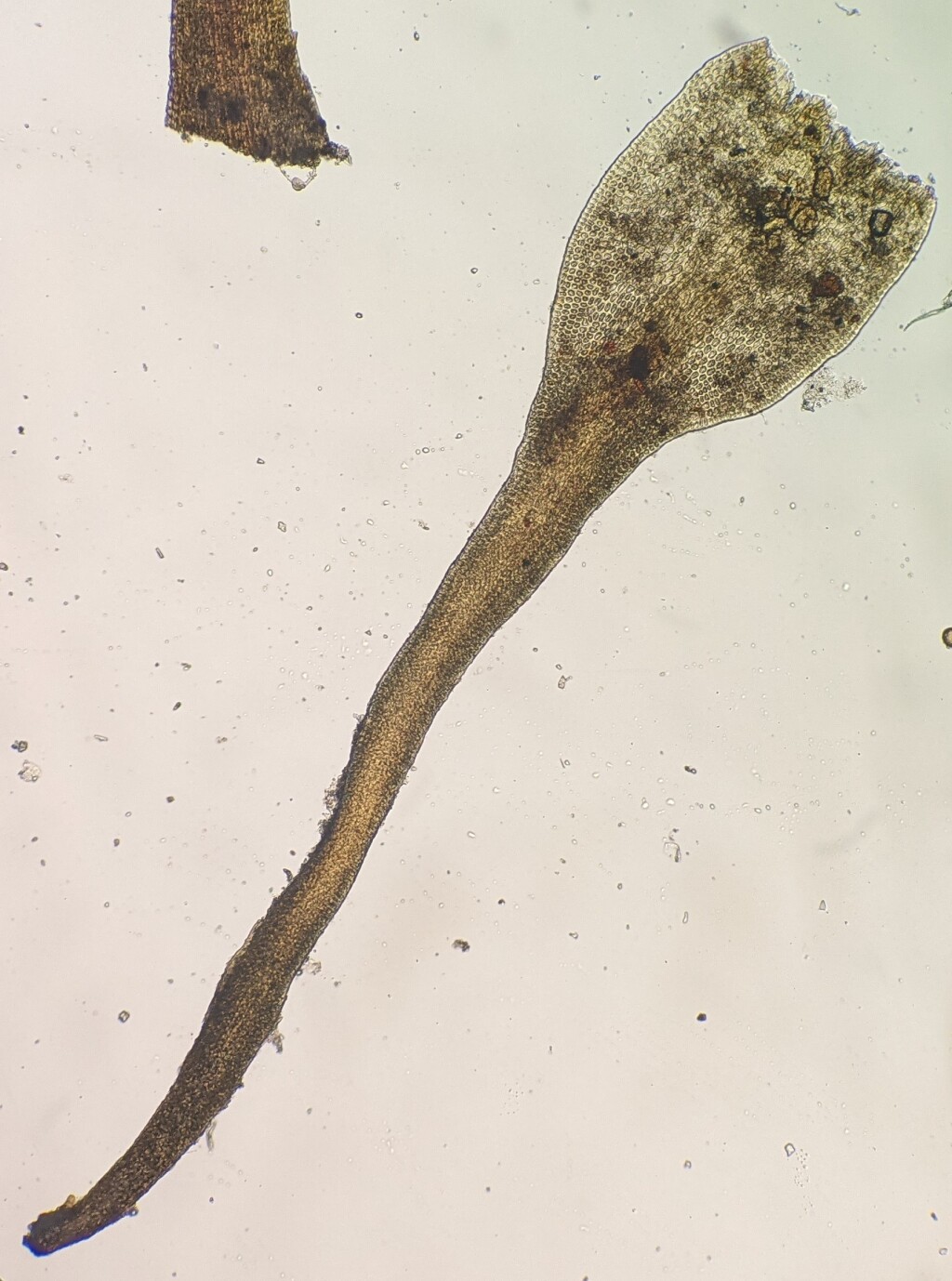Andreaea heinemannii
Hampe & Müll.Hal.- Bot. Zeitung (Berlin)* 4: 324 (1846)
Autoicous. Cushions or tufts on rock. Stems to 8 mm long. Leaves usually secund and spreading when moist and dry, subulate, tapering from an oblong, ovate or elliptic base, 1.3–2.5 mm long, 0.2–0.8 mm wide, concave and sheathing at base; apices acuminate, variably flexed; costae extending to apex, c. 1/3 width of leaf at base; margins entire, plane; cells in apical half isodiametric to quadrate, 5–14 μm long, 8.5–18 μm wide, smooth, bistratose; basal cells near margins isodiametric to rectangular, c. 8 μm long, c. 9 μm wide, those near costa quadrate to rectangular, 12–28 μm long, 8–10 μm wide. Perigonial paraphyses very rare. Perichaetial leaves convolute and sheathing. Pseudopodium c. 0.5 mm long. Capsules c. 0.2 mm long. Turgid spores 23–32 (–36) μm diameter; shrivelled spores 22–27 μm diameter.
VAlp. On exposed basalt on the Bogong High Plains and near Mount Hotham in the alpine zone and among subalpine woodland. Also NSW. New Zealand, Kerguelen Island, southern Europe, Caucasus, Macaronesia, Greenland and western North America.
 Spinning
SpinningMurray, B.M. (2006). Andreaeaceae. Flora of Australia 51: 108–123.

